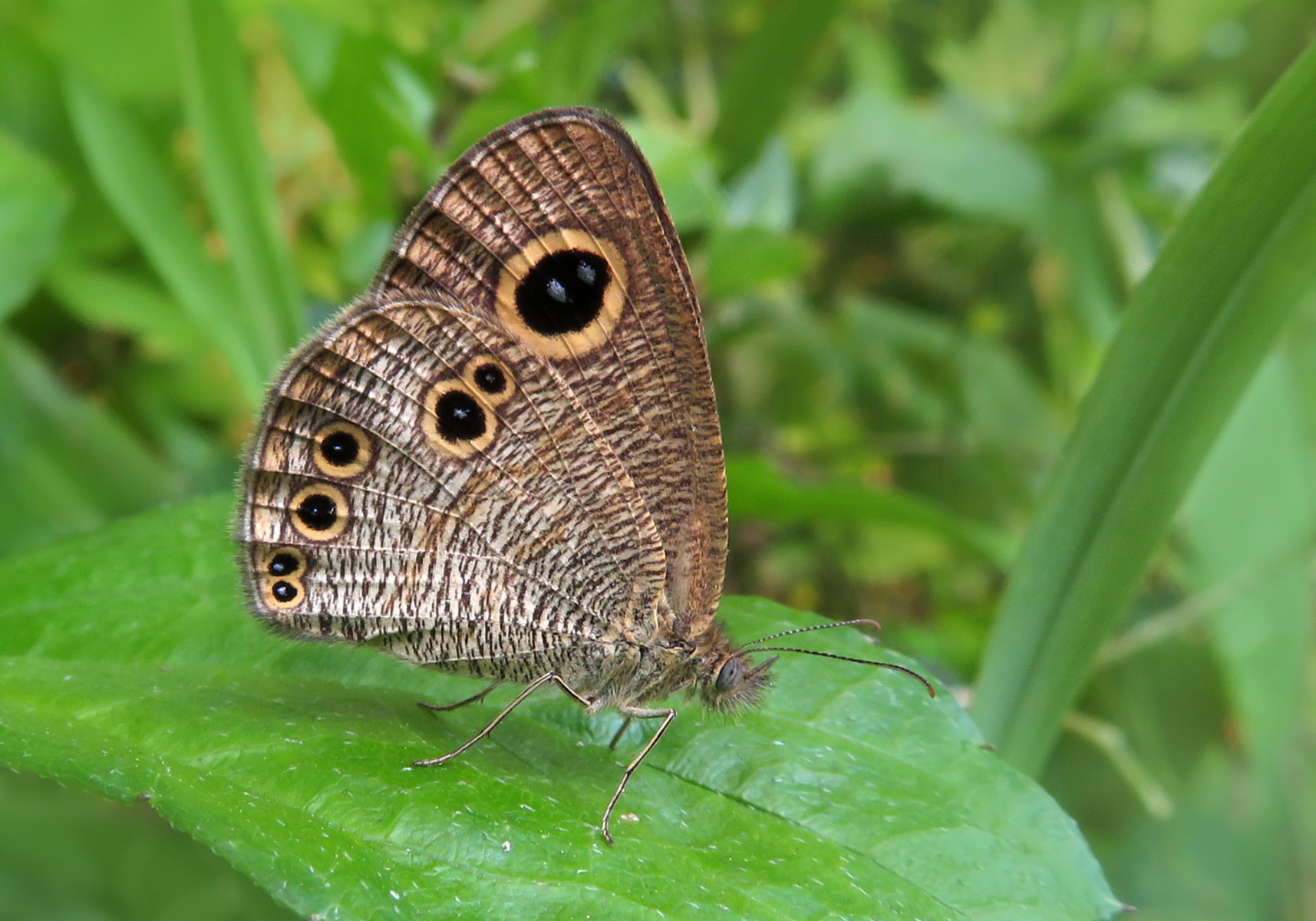Male Ypthima baldus has a dull brown upperwings with a broad gray-black stripe on the forewing, while the female is paler distally. The upperwings of this species have a large yellow-ringed ocellus in the space 2 forewing , 2 adjoining smaller yellow ringed ocelluses in the 2 and 3 hindwings. The underside of the wings is pale grayish to brown against a whitish background, there are many fine dark brown lines. The forewings have a large, bi-pupilled, yellow-ringed subapical ocellus. The hind wing has 5 yellow ringed ocelluses in spaces 1b, 2, 3, 5 and 6. A pair of ocellus in space 2 and 3 are large and side by side, a pair of ocellus in space 5 and 6 are side by side, the size of an ocellus in space 6 is larger, one ocellus in space 1b consists of two points joined together.
Larva: Ypthima baldus larvae are cylindrical, whitish in color with dorsal and lateral pink spots. The head is brownish in color with a pair of short, round horns, the body is covered with long setae on the dorso-lateral and lateral parts. Adult larvae can be green or brown.
Pupa: Ypthima baldus pupa is creamy brown with many small brown or black patches. The length of the pupa is about 10.5 – 11 mm.


